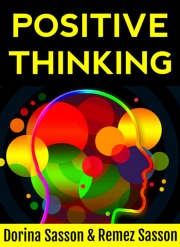
Happy employees are more productive, and what they produce is of higher quality.
A study conducted by Oxford University’s Said Business School (in collaboration with BT)found that happy employees are 13% more productive.
You can read more on the study here: SSRN Does Employee Happiness have an Impact on Productivity?
We know that people perform best when they are well-rested and encouraged-feeling fulfilled within their work.
How can you as an employer ensure that your team enjoys an outstanding work-life balance contributing to their happiness?
Big Picture Little Details
Treat each of your employees like they matter because they should-each member of the team, form part of your company picture.
Allowing your employees to make a real difference in the company is essential.
Regular internal communication detailing new initiatives, encouraging feedback (acting on that feedback), and the company vision creates a synergy within your team.
Work-Life Balance
Not every employee has the freedom to arrive early, leave late, and stay for Friday night drinks. Some employees have more going on outside of work than you are aware of.
A workforce that feels secure within their position is going to work harder and produce their best work – because it is safe to do so.
Creating an environment where staff aren’t worried to take time when they need it keeps the work-life balance healthy. They can rely on you, and you can rely on them in return.
To do this, you will need to understand more about what your staff value. Do they value the ability to work from home often? Do they appreciate flexible working hours?
Ask, then act on the feedback.
Rewards
Reward well, and reward often. If your rewards are significant and usually given in a single ceremony, that won’t last very long. Not even for the recipient.
Smaller rewards given with greater frequency keep the morale and the drive higher.
Ron Friedman, the author of The Best Place to Work, notes that “most employees respond better to small doses of reward every few days”.
Rewards for hitting targets should be as standard. This is for two reasons.
- 1.Humans respond positively to setting and meeting goals; it makes us happy.
- 2.You can create a reward/voucher program that works with your business goals.
Offer rewards for reaching targets, and you will quickly see an increase in output and morale.
Manners
Manners cost nothing and mean everything. If an employee is happy in their work, there is a very slim chance that they will leave – even if the money isn’t great.
If an employee feels unappreciated, no amount of money can keep them there.
Unappreciation will grind down their enthusiasm for what they do, and their work will reflect it.
Cultivate a positive workplace environment.
This step you can only do by leading by example. Personally saying thank you, please and acknowledgement of your team.
These gestures cost nothing, and they can mean a lot. Ensure that your entire company is built on those two words – thank you.
Fun Stuff
Some employees will live for the Friday afternoon beer and burger type catch-ups. Other employees will give it a miss.
You should take the time to understand what sort of gatherings or work events will be best for your team.
Some might like family picnic days; others will enjoy something active, others will prefer nothing.
Create a space where introverts don’t feel pressured to come but always feel welcome.
Elevation
Helping your staff to increase their knowledge and skills is a big plus for many employees.
Discussing how your employees see their future will give you a clear indicator of the opportunities you should be providing.
Create career paths throughout your company. If you cannot provide promotions in a traditional sense, you have to look for personal development.
Mentoring, training, skill development and personal development growth can all be achieved through communication.
Happiness and positivity are some of the most powerful tools you have to create a productive and high-achieving staff.


